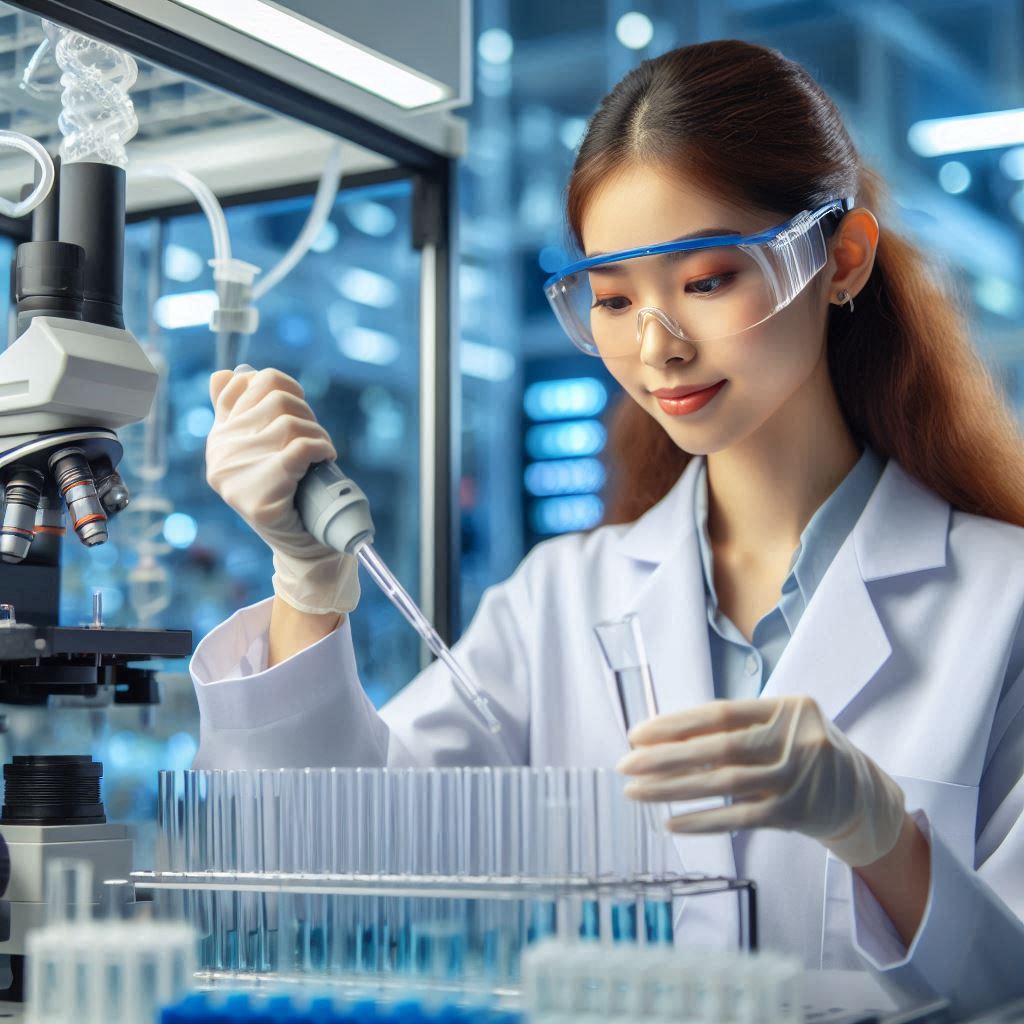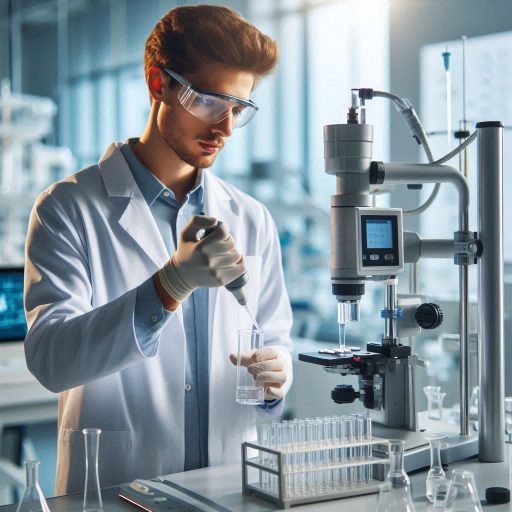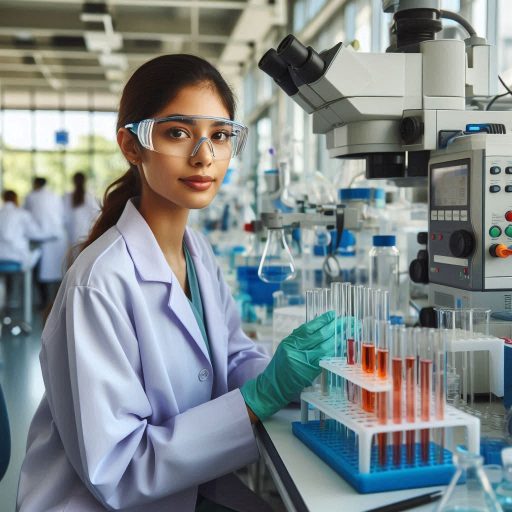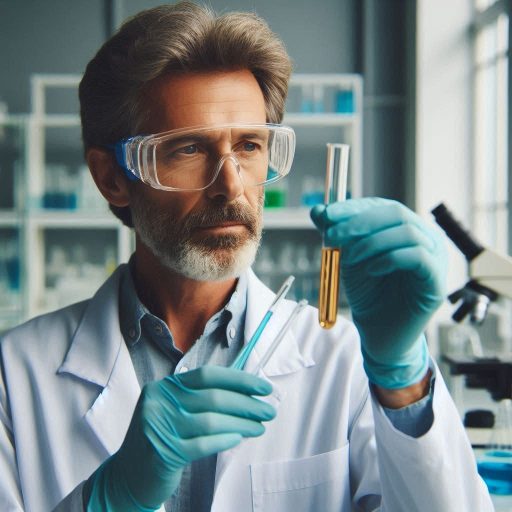Introduction
Biomedical engineering integrates engineering principles with medicine and biology to tackle healthcare challenges.
This field focuses on developing advanced technologies and devices to improve medical outcomes.
A key area of biomedical engineering is drug delivery, which plays a critical role in how effectively medications treat diseases.
Drug delivery refers to the methods and systems used to transport drugs to their intended sites in the body.
Traditional methods like oral tablets and injections have been fundamental in healthcare.
Oral tablets offer convenience but often suffer from issues such as poor absorption and gastrointestinal degradation.
Injections, while more direct, can cause discomfort and carry risks of infection.
Advancing drug delivery systems is crucial for enhancing the efficacy and safety of treatments.
Biomedical engineering seeks to address the limitations of conventional methods by developing innovative solutions.
These advancements include targeted delivery systems, smart technologies, and less invasive methods, all aimed at improving therapeutic outcomes and patient compliance.
The field of biomedical engineering continually evolves, bringing new possibilities for drug delivery.
As technology advances, the potential for more effective and patient-friendly delivery systems grows.
Exploring these innovations demonstrates how biomedical engineering transforms drug delivery, leading to better healthcare practices and improved patient experiences.
Overview of drug delivery systems
Traditional Methods of Drug Delivery, Such as Oral Tablets and Injections
Traditional methods of drug delivery, such as oral tablets and injections, have long dominated healthcare.
Oral tablets provide a convenient and non-invasive way to administer medication.
They are easy to produce and administer, making them a popular choice.
However, oral tablets often suffer from poor bioavailability.
The digestive process can degrade drugs before they reach the bloodstream.
Factors like stomach acidity and digestive enzymes can significantly reduce the effectiveness of orally administered drugs.
Injections offer a more direct method of drug delivery, delivering drugs into muscles or veins.
This method bypasses the digestive system, allowing for more predictable absorption.
Injections are commonly used for vaccines, insulin, and pain management.
Despite their effectiveness, injections come with drawbacks.
They can be painful and cause discomfort, leading to a fear of needles in some patients.
Additionally, injections carry risks of infection at the injection site, especially if not administered properly.
Both oral tablets and injections have limitations that affect their overall efficacy and patient compliance.
Oral tablets may not be suitable for drugs that are poorly absorbed in the gastrointestinal tract.
They can also cause gastrointestinal side effects like nausea or irritation.
On the other hand, injections require trained healthcare professionals for administration.
Frequent injections can lead to patient discomfort and decreased adherence to treatment regimens.
Concept of Biomedical Engineering in Improving Drug Delivery Systems
Biomedical engineering is revolutionizing drug delivery by overcoming traditional limitations.
This field merges engineering and biology to create innovative solutions.
Biomedical engineers enhance the efficacy, safety, and patient compliance of drug delivery systems.
They develop systems that target specific body sites, minimize side effects, and improve outcomes.
Nanoparticle drug delivery represents a major breakthrough.
Nanoparticles encapsulate drugs, protecting them from degradation.
These particles navigate the bloodstream and release drugs at targeted sites.
This precision reduces the required dosage and limits side effects.
Nanoparticles can cross barriers like the blood-brain barrier, enabling treatments for neurological disorders.
For instance, they deliver chemotherapy drugs directly to brain tumors, enhancing treatment efficacy.
Smart drug delivery systems also signify a major innovation.
These systems respond to stimuli such as pH changes or temperature.
For example, a drug releases in a tumor’s acidic environment, targeting the treatment effectively.
This approach ensures that healthy tissues remain unaffected.
Smart systems can also provide sustained release, maintaining drug levels over time.
This reduces the need for frequent dosing and improves compliance.
An example is glucose-responsive insulin systems, which release insulin in response to rising glucose levels.
Hydrogels offer another advancement.
These water-based gels hold large drug amounts and can be injected.
Once inside the body, they slowly release their drug payload.
Hydrogels are ideal for targeted delivery to specific tissues and can degrade at controlled rates, ensuring prolonged release.
Implantable drug delivery devices release drugs over extended periods.
These devices ensure consistent therapeutic levels, benefiting chronic conditions needing long-term medication.
This reduces the burden of frequent dosing.
Biomedical engineering’s advances mark a significant leap in medical science, offering more efficient, targeted, and patient-friendly solutions.
Nanotechnology in drug delivery
Explaining nanotechnology’s role in drug delivery
Nanotechnology has emerged as a groundbreaking technology in the field of drug delivery.
It involves the manipulation of molecules and particles at the nanoscale to create nanoparticles that can deliver drugs more effectively to targeted cells or tissues.
This precision targeting holds immense potential in improving the treatment outcomes of various diseases and reducing the side effects associated with traditional drug delivery methods.
One of the key advantages of using nanotechnology in drug delivery is the ability to enhance the efficacy of therapeutic agents.
By encapsulating drugs within nanoparticles, researchers can ensure that they reach the intended site of action in the body, increasing their concentration at the target site and improving their therapeutic effect.
This targeted delivery approach is particularly beneficial for treating conditions such as cancer, where specific targeting of tumor cells is crucial for successful treatment.
Benefits of using nanotechnology
Additionally, nanotechnology offers the advantage of reducing side effects associated with traditional drug delivery methods.
By targeting specific cells or tissues, nanoparticles can minimize the impact on healthy cells, thereby decreasing the occurrence of adverse effects.
This targeted approach not only enhances the safety profile of drugs but also improves patient tolerance to treatment, leading to better overall outcomes.
Furthermore, nanotechnology can enhance the bioavailability of drugs, ensuring that a higher proportion of the administered dose reaches the systemic circulation and exerts its therapeutic effect.
This increased bioavailability can lead to improved drug efficacy and potentially lower the required dosage of drugs, reducing the risk of toxicity or adverse reactions in patients.
Moreover, the enhanced bioavailability can also improve patient compliance by reducing the frequency of drug administration or the total amount of drug intake.
Generally, nanotechnology represents a significant innovation in drug delivery that offers numerous benefits in terms of increased efficacy, reduced side effects, enhanced bioavailability, and improved patient compliance.
By harnessing the power of nanoscale particles, researchers can tailor drug delivery systems to specific therapeutic needs, paving the way for more effective and targeted treatments for a wide range of diseases.
As this field continues to evolve, the future of drug delivery holds great promise for improving patient outcomes and revolutionizing the way we approach medical treatments.
Read: Exploring Architect Salary Trends: USA Analysis.
Implantable drug delivery systems
Advancements in implantable devices that can deliver drugs directly to the target site in the body
Innovations in biomedical engineering are revolutionizing drug delivery.
Implantable devices now deliver drugs directly to the target site in the body.
These advancements enhance precision and efficiency in medical treatments.
Implantable drug delivery systems are becoming a game-changer in healthcare.
One significant advancement is the development of microchip-based devices.
These devices release precise doses of medication at scheduled intervals.
This technology ensures consistent and controlled drug delivery, reducing the risk of overdose or underdose.
Patients benefit from a more reliable and predictable treatment regimen.
Another breakthrough involves biodegradable implants.
These implants gradually release medication as they dissolve within the body.
They eliminate the need for surgical removal, minimizing patient discomfort and risk.
Biodegradable implants are particularly useful for long-term therapies, such as hormone treatments or chronic pain management.
Nanotechnology plays a crucial role in improving drug delivery systems.
Nanoscale devices can navigate through the bloodstream and reach specific cells or tissues.
They enhance the efficacy of treatments by targeting diseased areas while sparing healthy tissue.
This precision reduces side effects and improves patient outcomes.
Implantable pumps represent another innovation in drug delivery.
These pumps can be programmed to deliver medication continuously or at specific times.
They are particularly beneficial for patients requiring constant drug levels, such as those with diabetes or chronic pain.
The ability to adjust dosage remotely adds convenience and flexibility to treatment plans.
How implantable drug delivery systems are improving patient compliance and treatment outcomes
Patient compliance is a significant challenge in medication management.
Implantable drug delivery systems address this issue by reducing the burden of daily medication administration.
Patients no longer need to remember to take pills or manage complex dosing schedules.
This improvement in compliance leads to better treatment outcomes and a higher quality of life.
Innovations in implantable devices also enhance treatment adherence.
These systems ensure that patients receive their medication as prescribed, without the risk of missed doses.
Enhanced adherence is particularly crucial for conditions requiring strict medication regimens, such as HIV or tuberculosis.
The integration of sensors in implantable devices further improves drug delivery.
Sensors can monitor physiological parameters and adjust medication delivery in real-time.
This adaptability ensures optimal therapeutic levels and reduces the risk of adverse reactions.
Sensor-enabled devices offer a personalized approach to treatment, catering to the specific needs of each patient.
Research in implantable drug delivery systems continues to advance.
Scientists are exploring new materials, such as smart polymers, that respond to changes in the body’s environment.
These materials can release drugs in response to specific triggers, such as pH or temperature changes.
Such innovations promise to enhance the precision and effectiveness of drug delivery.
Transform Your Career Today
Unlock a personalized career strategy that drives real results. Get tailored advice and a roadmap designed just for you.
Start NowIn review, implantable drug delivery systems are transforming healthcare.
They offer precise, controlled, and targeted medication delivery, improving patient compliance and treatment outcomes.
The ongoing advancements in biomedical engineering hold great promise for the future of medicine, ensuring better health and quality of life for patients worldwide.
Read: Comparison: Architecture Styles across American Regions.
Controlled drug release
How biomedical engineers are developing systems that can control the release of drugs over time
Biomedical engineers are revolutionizing drug delivery through controlled release systems.
They develop systems that can regulate the release of drugs over time.
This innovation involves embedding drugs in biodegradable polymers or designing micro- and nanoparticles.
These advanced carriers release the drug at a specific rate, ensuring that the drug maintains its therapeutic levels in the body.
One significant method is using hydrogels. Hydrogels can swell and release drugs in a controlled manner.
By adjusting the hydrogel’s properties, engineers can control the drug release rate.
Additionally, they use liposomes, which are tiny lipid-based vesicles.
Liposomes can encapsulate drugs and release them gradually.
These systems can target specific tissues, enhancing the drug’s efficacy.
Another technique involves implantable devices.
Engineers design these devices to release drugs at a controlled rate.
These implants can be programmed to deliver drugs for weeks or even months.
For instance, certain implants release pain medication over an extended period.
This approach eliminates the need for frequent dosing, improving patient compliance.
Magnetic nanoparticles are another innovation.
These particles can be guided to a specific site using an external magnetic field.
Once at the target site, they release the drug in a controlled manner.
This method ensures the drug acts precisely where needed, reducing side effects.
Advantages of controlled drug release
Controlled drug release offers numerous advantages.
It maintains constant drug levels in the body, ensuring optimal therapeutic effects.
Traditional drug administration often leads to fluctuating drug levels.
These fluctuations can cause periods of underdosing or overdosing.
Controlled release systems eliminate these peaks and troughs, providing a steady drug concentration.
Reducing the frequency of dosing is another significant advantage.
Many patients struggle with remembering to take their medication.
Controlled release systems reduce the need for frequent dosing.
This simplification improves patient adherence to treatment regimens.
For chronic conditions, this can be particularly beneficial.
Moreover, controlled release reduces side effects.
By delivering drugs directly to the target site, it minimizes systemic exposure.
This targeted approach means fewer side effects and a better patient experience.
For example, cancer treatments often cause severe side effects.
Controlled release systems can deliver chemotherapy directly to tumors, sparing healthy tissues.
Another advantage is the potential for personalized medicine.
Engineers can design systems tailored to an individual’s specific needs.
This customization can enhance treatment efficacy and reduce adverse effects.
For instance, controlled release systems can be adjusted based on a patient’s metabolism.
This personalization ensures the drug is released at the optimal rate for each individual.
Furthermore, these systems can improve drug stability.
Many drugs degrade quickly in the body.
Controlled release systems protect the drug, ensuring it remains effective for longer.
This stability is crucial for drugs with a short half-life.
Read: 5 Essential Software Tools Every US Architect Uses.

Targeted drug delivery
How Targeted drug delivery
Targeted drug delivery systems are meticulously designed to deliver drugs to specific tissues or cells, minimizing off-target effects.
These systems utilize various technologies to ensure precision in drug delivery.
- One common approach to targeted drug delivery is the use of nanoparticles.
These tiny particles can be engineered to target specific receptors on the surface of cells, allowing for precise drug delivery. - Another method involves the use of antibodies or ligands that can bind to specific proteins on the surface of target cells.
This targeted approach increases the efficacy of drug delivery while minimizing side effects. - Microspheres are another innovative tool used in targeted drug delivery.
These microscopic particles can be loaded with drugs and designed to release them at a specific location in the body, ensuring targeted delivery.
Potential applications of targeted drug delivery
Targeted drug delivery holds immense promise in treating various diseases, including cancer and diabetes.
By delivering drugs directly to affected tissues or cells, targeted drug delivery can significantly improve treatment outcomes and reduce side effects.
- Cancer treatment: Targeted drug delivery systems can deliver chemotherapeutic agents directly to tumors, minimizing damage to healthy tissues and reducing side effects.
This targeted approach can improve the efficacy of cancer treatments. - Diabetes management: Targeted drug delivery systems can deliver insulin directly to the pancreas, where it is needed most.
This can help regulate blood sugar levels more effectively and reduce the risk of hypoglycemia in diabetic patients. - Neurological disorders: Targeted drug delivery systems can be used to deliver drugs across the blood-brain barrier, allowing for the treatment of neurological disorders such as Alzheimer’s and Parkinson’s disease.
This targeted approach can improve drug efficacy and reduce systemic side effects.
Overall, targeted drug delivery represents a groundbreaking advancement in biomedical engineering, offering new possibilities for precise and effective drug treatment.
By harnessing the power of targeted drug delivery systems, researchers and clinicians can revolutionize the way we treat a wide range of diseases and improve patient outcomes.
Read: Top Cities for Electrical Engineering Jobs in America
Challenges and future directions
Addressing challenges
Biomedical engineers face numerous challenges in developing innovative drug delivery systems.
One of the primary concerns is ensuring the safety and efficacy of these systems.
With new technologies emerging continuously, maintaining a high standard of safety for patients is critical.
Engineers must conduct thorough testing and clinical trials to assess the potential risks and benefits of new drug delivery methods.
Regulatory issues also pose significant challenges for biomedical engineers.
The approval process for new drug delivery technologies can be lengthy and complex, requiring engineers to navigate through various regulatory bodies and adhere to strict guidelines.
Compliance with regulations is essential to ensure the safety and effectiveness of new drug delivery systems.
Exploring future directions
- Personalized drug delivery is a promising area of research that aims to tailor treatment plans to individual patients.
- The use of artificial intelligence in drug development is revolutionizing the field of biomedical engineering.
Future directions in biomedical engineering include personalized drug delivery, which involves customizing treatment plans based on a patient’s unique characteristics.
By analyzing genetic information, lifestyle factors, and other data, engineers can develop personalized drug delivery systems that are more effective and less likely to cause adverse reactions.
Showcase Your Business Today
Reach thousands of readers actively exploring professional services. Publish your business profile and grow your audience now.
Publish NowAnother exciting development is the integration of artificial intelligence (AI) into drug development processes.
AI algorithms can analyze vast amounts of data to identify potential drug candidates, predict their efficacy, and optimize drug delivery methods.
This use of AI has the potential to accelerate the pace of drug discovery and development, leading to more efficient and targeted treatments for various diseases.
Conclusion
Biomedical engineering is transforming drug delivery with groundbreaking innovations.
Implantable devices now deliver drugs directly to targeted sites within the body, significantly improving precision.
Microchip-based systems provide controlled, scheduled medication release, reducing risks associated with overdosing or underdosing.
Biodegradable implants, which dissolve over time, eliminate the need for additional surgeries, making long-term treatments more convenient and less invasive.
Nanotechnology further enhances drug delivery by enabling nanoscale devices to navigate through the bloodstream and target specific cells.
This targeted approach minimizes side effects and increases the efficacy of treatments.
Implantable pumps offer continuous or adjustable medication delivery, which is crucial for managing chronic conditions such as diabetes or severe pain.
These advancements also address patient compliance issues by minimizing the need for daily medication management.
Patients benefit from reduced dosing complexity and more reliable treatment adherence.
Sensor integration allows real-time monitoring and adjustment of medication, optimizing therapeutic outcomes and reducing adverse reactions.
Biomedical engineering continues to drive progress with innovations like smart polymers, which respond to changes in the body’s environment to release medication.
These technologies represent significant steps forward in drug delivery, promising improved patient outcomes and a better quality of life.
[E-Books for Sale]
The Big Book of 500 High-Paying Jobs in America: Unlock Your Earning Potential
$19.99 • 500 High-Paying Jobs • 330 pages
Explore 500 high-paying jobs in America and learn how to boost your career, earn more, and achieve success!
See All 500 High-Paying Jobs of this E-Book
1001 Professions Without a Degree: High-Paying American Jobs You Can Start Now
$19.99 • 1001 Professions Without a Degree • 174 pages
Discover 1001 high-paying jobs without a degree! Unlock career tips, skills, and success strategies for just $19.99!




